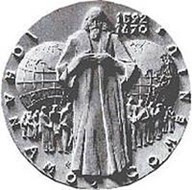Presence of Comenius in Ibero-America
DOI:
https://doi.org/10.21680/2596-0113.2024v7n1ID35268Keywords:
Comenius, History of Pedagogy, Historiography of Iberoamerican EducationAbstract
Since colonial times, when his didactic works for teaching Latin were widely used in Catholic seminaries, the presence of João Amos Comenius (1592-1670) has been recorded in Latin American education. Initially through the circulation of his language teaching manuals, among which Orbis Pictus played a prominent role, then through his association with the intuitive method in the 19th century and with the Escola Nova in the 20th century, the name of Comenius appears frequently in the history of our education. Schools and colleges in the region bear his name, his works are translated into Spanish and Portuguese, seminars about his life and work are held, thus incorporating his name into our educational culture. Advances in studies on his work, such as the discovery of the manuscripts of the monumental De Rerum Humanarum Consultatio Catholica in 1935 in Germany, have revealed new facets of his thought to support our reflections on education. In this work, we seek to highlight the Ibero-American presence of Comenius through consultation of his books published here and the production of works and articles about his life and work carried out in the region.
Downloads
References
Aguirre, M. E. (Coord.). (1993). Juan Amós Comenio: obra, andanzas, atmósferas (libro y cassette). México: CESU-UNAM
Araújo, B. (1992). A atualidade do pensamento de Jan Amos Comenius. Temas em Educação, n. 2, p. 157-165.
Araújo, B. (1996). A atualidade do pensamento pedagógico de Comenius. Salvador: Ed. da UfBa.
Bastos, M. H. C. (2013). Método intuitivo e lições de coisas por Ferdinand Buisson. Hist. Educ. [Online]. Porto Alegre, v. 17, n. 39, p. 231-253.
Cambi, F. (1999). História da Pedagogia. São Paulo: EDUNESP.
Comenio, J. A. (1992). Pampedia. Madrid: UNED.
Comenio, J. A. (1993). El mundo sensible en imágenes. México: CONACYT-Miguel Angel Porrúa.
Coménio, J. A. (1971). Pampaedia. Coimbra: Casa do Castelo.
Coménio, J. A. (1976). Didáctica Magna. 2ª ed. Lisboa: Fundação Calouste Gulbenkian.
Comenius, J. A. (1643). Ianua Linguarum Reserata. Amsterdam: Elzevir.
Comenius, J. A. (1666). Orbis Sensualium Pictus. Nuremberg: Endter. Disponível em http://objdigital.bn.br/objdigital2/acervo_digital/div_obrasraras/or55391/or55391.pdf. Acesso em 13 de maio de 2020.
Comenius, J. A. (1887). Orbis Pictus. Syracuse: Bardeen.
Comenius, J. A. (1966). De rerum humanarum consultatio catholica. V. II. Praha: Academia.
Comenius, J. A. (1997). Didática Magna. São Paulo: Martins Fontes.
Comenius, J. A. (1999). El labirinto del mundo y el paraíso del corazón. Buenos Aires: EKUMENE.
Comenius, J. A. (2000). El centro de la seguridad. Buenos Aires: EKUMENE.
Comenius, J. A. (2002). El camino de la luz. Buenos Aires: EKUMENE.
Comenius, J. A. (2011). A Escola da Infância. São Paulo: Edunesp.
Comenius, J. A. (2015). O único necessário. Jarinu/SP: Pentagrama.
Covello, S. C. (1991). Comenius. A construção da pedagogía. São Paulo: SEJAC.
Cucuzza, H. R. (2017) Desembarco de la escuela nueva en Buenos Aires: heterogéneas naves atracan en puertos heterogéneos. Revista Brasileira de Pesquisa (Auto)Biográfica, Salvador, v. 02, n. 05, p. 310-329.
Čornejová, I. (1991). The Jesuit School and John Amos Comenius. In: J. Pesková, J. Cach, M. Svatoš (Eds.). Homage to J. A. Comenius. Praha: Karolinum, p. 82-95.
Debesse, M. e Mialaret, G. (1977). Tratado das Ciências Pedagógicas. v. 2. História da Pedagogia. São Paulo: CEN/EDUSP.
Dobrizhoffer, M. (1783). Geschichte der Abipones. V. II. Viena: Kurzbek.
Gasparin, J. L. (1994). Comênio ou da arte de ensinar tudo a todos. Campinas: Papirus.
Gasparin, J. L. (1997). Comênio. A emergência da modernidade na educação. Petrópolis/RJ: Vozes.
Gonzalo, J. e Rabazas, T. (2009). Continuities and discontinuities in the origins of the institutionalisation of pedagogy in Spain. Paedagogica Historica, v. 45, n. 3, p. 355–367.
Groenendik, L. F. e Sturm, J. C. (1999). On the Use and Abuse of Great Educators: the Case of Comenius in the Low Countries. Paedagogica Historica, v. 35, n. 1, p. 112-124.
Jelinek, V. (1953). The Analytical Didactic of Comenius. Chicago: The University of Chicago Press.
Kahn, P. (2014). Lições de coisas e ensino das ciências na França no fim do século 19: contribuição a uma história da cultura. Hist. Educ. [Online]. Porto Alegre, v. 18. n. 43, p. 183-201.
Kašpar, O. (1984). Latin America in the Work of J. A. Comenius. Studia Comeniana et Historica, 27, XIV, p. 58-64.
Kašpar, O. (1991). Comenius and Latin America. In: J. Pesková, J. Cach, M. Svatoš (Eds.). Homage to J. A. Comenius. Praha: Karolinum, p. 282-287.
Korthaase, W. (1996). Urteile über Comenius und den Wert seiner Schriften für unsere Zeit. In: Golz, R.; Korthaase, W.; Schäfer (Hrsg.). Comenius und unsere Zeit. Berlin: Schneider Verlag.
Kulesza, W. A. (1990). Comenius and Brazilian Education. Studia Comeniana et Historica, 41, XX, p. 160-164.
Kulesza, W. A. (1992). Comenius. A persistência da utopia em educação. Campinas: Ed. da UNICAMP.
Kulesza, W. A. (2015). Uma fonte inédita para historiar a recepção de Comenius no Brasil. Cadernos de História da Educação, 14(1). Recuperado de http://www.seer.ufu.br/index.php/che/article/view/32132.
Luzuriaga, L. (1984). História da educação e da pedagogia. 15ª ed. São Paulo: Ed. Nacional.
Manacorda, M. A. (1989). História da Educação. São Paulo: Cortez: Autores Associados.
Marques, Francisco. Muitas coisas, poucas palavras. São Paulo: Peirópolis, 2009 e 2023 (2a. edição).
Mištinová, A. (2009). Comenius and Hispanic world. In: S. Cocholová; M. Pánková; M. Steiner, (Eds.). Johannes Amos Comenius. The Legacy to the Culture of Education. Praha: Academia.
Narodowoski, M. (2001). Comenius e a Educação. Belo Horizonte: Autêntica.
Piaget, J. (2010). Jan Amos Comênio. In : Marcondes, M. (org.). Jan Amos Comênio. Recife : Massangana. Disponível em : http://www.dominiopublico.gov.br/download/texto/me4674.pdf. Acesso em 26 de abril de 2020.
Polišenský, J. (1974). Las Casas a Komenský. Studia Comeniana et Historica, 8-9, IV, p. 57-69.
Polišenský, J. (1993). Comenio y el mundo hispano-americano. Ibero-Americana Pragensia, XXVII, Univerzita Karlova, Praha, p. 41-50.
Ruíz, C. E. (2009). Maria Esther Aguirre-Lora, educadora de pensamiento libre. Revista Aleph, n. 148, v. 43, p. 17-40.
Runge, A. K. (1998). Juan Amos Comenio ¿Superado o desconocido? Íkala, revista de lenguaje y cultura, Vol..3, no. 5, p. 24-32.
Runge, A. K. (2001). Sobre el trato correcto con los libros, las herramientas principales de la formación. Revista Educación y Pedagogía. Medellín: Facultad de Educación. Vol. XIII, No. 29-30, pp.197-205.
Schifferova, V. La ética en el pensamiento de Comenio: Cuatro estudios sobre la obra de Jan Amos Komensky. Mar del Plata: Kazak Ediciones, 2018.
Southey, R. (1819). History of Brazil. Vol. 3. London: Longman, Hurst, Rees, Orme and Brown.
Steiner, M. (2005). The works of Comenius: criteria for the classification of over 200 titles. In: Fritsch, A.; Hauff, S.; Korthaase, W. (eds.). Comenius und der Weltfriede. Berlin: Deutsche Comenius-Gesellschaft.
Ungureanu, I. (2015). Lecture de l’oeuvre pédagogique de Comenius sous la IIIe République. Revista Lusófona de Educação, n. 30, p. 159-173.
Walker, D. Comenius: o criador da didática moderna. Juazeiro do Norte/CE: HB Editora, 2001.

Downloads
Published
How to Cite
Issue
Section
License
Copyright (c) 2024 Wojcich Andrzej Kulesza

This work is licensed under a Creative Commons Attribution 4.0 International License.
Autores que publicam nesta revista concordam com os seguintes termos:
Autores mantém os direitos autorais e concedem à revista o direito de primeira publicação, com o trabalho simultaneamente licenciado sob a Licença Creative Commons — Attribution 4.0 International — CC BY 4.0 que permite o compartilhamento do trabalho com reconhecimento da autoria e publicação inicial nesta revista.
Autores têm autorização para assumir contratos adicionais separadamente, para distribuição não-exclusiva da versão do trabalho publicada nesta revista (ex.: publicar em repositório institucional ou como capítulo de livro), com reconhecimento de autoria e publicação inicial nesta revista.
Autores têm permissão e são estimulados a publicar e distribuir seu trabalho online (ex.: em repositórios institucionais ou na sua página pessoal) a qualquer ponto antes ou durante o processo editorial, já que isso pode gerar alterações produtivas, bem como aumentar o impacto e a citação do trabalho publicado.

 Português (Brasil)
Português (Brasil) English
English Español (España)
Español (España) Français (Canada)
Français (Canada)



